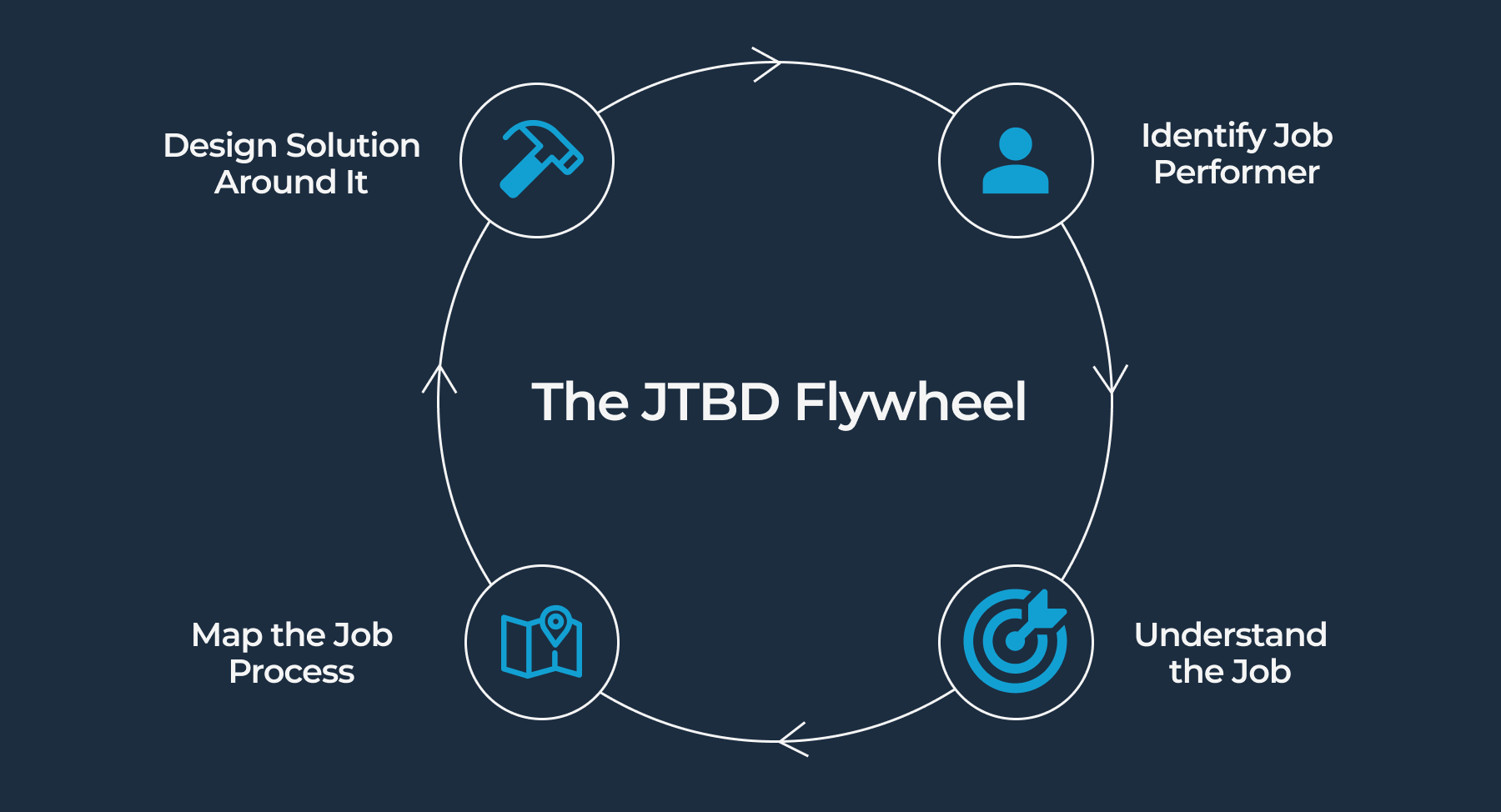At the end of the day people have a job that just needs to get done irrespective of what technology or tool they are using. ChatGPT and AI Agents seem all the rage but they don’t change the work you need to get done in a day. This is why Jobs-to-be-done (JTBD) is so transformative for product design.



Every business wants to create products and services that customers love, yet so many fail to truly understand what their customers are trying to achieve. We often get caught up in feature lists, marketing campaigns, and customer journey maps, but these don’t always reveal why people make decisions. This is where Jobs to Be Done (JTBD) comes in.
Imagine you’re designing a meal kit service. Instead of asking customers what recipes they like, you ask: “What job is the customer hiring this meal kit to do?” The answer might be “Make a quick and healthy dinner on a busy weeknight.” This shift in thinking transforms how you design, market, and iterate on your product.
JTBD isn’t just another framework—it’s a mindset shift that helps businesses focus on customer objectives, not just interactions. Let’s dive into how it works.
JTBD is a solution-agnostic approach to understanding customer behavior. The core idea is that people "hire" products and services to help them accomplish a job.
Another overlooked factor is switching costs. Your product, service or new workflow may promise great things but people are already accomplishing their jobs and will be hesitant to switch to your new solution. The Four Forces of Progress help you understand switching costs and how to win them over.
Key Principles of JTBD:
A job is different from a customer journey because it focuses on the desired outcome, not the path taken to get there. A job should be framed in simple terms, like:
By shifting the focus to what customers are trying to achieve, businesses can create better solutions and stay ahead of competitors.

To apply JTBD, follow these steps:
1. Define the Job Performer
Who is trying to get the job done? Identify your primary user.
2. Identify the Main Job
What is the core objective? Avoid solutions—focus on outcomes.
3. Break Down the Job Process
Understand the steps, needs, and pain points involved in completing the job.
4. Consider Circumstances
When and where does the job occur? What external factors impact decision-making?
5. Uncover Related Jobs
Are there adjacent jobs that need consideration?
6. Address Emotional & Social Jobs
Beyond functionality, how do customers want to feel when performing the job?
By mapping these elements, you can create a job-centric approach to product design, marketing, and innovation.
“People don’t adopt new products because they’re shiny or smarter—they switch because something in their life pushes them to seek a better way to get a job done. But even then, habit and anxiety pull them back. To design truly impactful solutions, you must focus on the progress they seek—not the tools they use.”

JTBD is often implemented using structured research methods, including
1. Customer Interviews (Switch Interviews)
2. Job Maps
3. Outcome-Driven Innovation (ODI)
4. The Four Forces of Progress
A framework for understanding why customers switch from one solution to another:
Using these tools, companies can develop products, services and internal workflows that align with real customer motivations instead of assumptions.
Case Study: Intercom
Intercom, a customer messaging platform, applied JTBD to redefine its value proposition. Instead of focusing on features, they reframed their product around customer needs:
By structuring their offering around jobs, Intercom positioned itself as an essential business tool rather than just another chat software.
Case Study: Snickers
Snickers shifted its marketing from “a chocolate bar” to “a solution for hunger between meals.” This JTBD insight led to the famous tagline: *“You’re not you when you’re hungry.”*
JTBD can apply to any industry—whether you're designing software, selling consumer products, improving a service, or designing internal workflows and processes.

While JTBD is a powerful tool, it comes with some challenges:
1. Confusing Jobs with Solutions
2. Ignoring Emotional and Social Jobs
3. Overcomplicating the Process
By keeping these in mind, you can avoid common pitfalls and make JTBD work for your business.
If you’re building a product, designing a marketing strategy, or launching a new business, start with the job, not the solution.
Next Steps:
By adopting the Jobs to Be Done framework, you can create solutions that resonate deeply with customers—because you’re solving problems that truly matter.